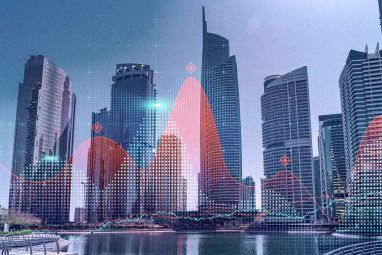Hyperscale Data Centers Growing at an Impressive Pace, Driven by Generative AI
Cloud providers Amazon, Microsoft, and Google have the broadest data center footprints.
Topics
News
- NVIDIA Deepens AI Push With $5 Bn Intel Stake, $20 Bn Groq Deal
- What VCs Expect from Enterprise AI in 2026
- Manus Joins Meta in Major Bet on Autonomous AI Agents
- AI Job Losses Could Accelerate By 2026, Geoffrey Hinton Warns
- Bahrain Shows High Digital Maturity in World Bank GovTech Index
- Sam Altman Calls for a Head of Preparedness at OpenAI

[Source photo: Krishna Prasad/Fast Company Middle East]
New data from Synergy Research Group shows that the number of large data centers operated by hyperscale providers increased to 992 at the end of 2023 and passed the thousand mark in early 2024.
Meanwhile, it has taken just four years for the total capacity of hyperscale data centers to double as the number of facilities grows rapidly and their average capacity continues to climb. Data shows that the US accounts for 51% of worldwide capacity, measured by MW of critical IT load, with Europe and China each accounting for about a third of the balance.
The forecast is that total hyperscale data center capacity will double again in the next four years. While each year will see some 120-130 additional hyperscale data centers coming online, capacity growth will be driven increasingly by the even larger scale of those newly opened data centers, with generative AI technology being a prime reason for that increased scale.
The research analyzes the data center footprint of 19 of the world’s major cloud and internet service firms, including the largest operators in SaaS, IaaS, PaaS, search, social networking, e-commerce, and gaming.
The leading cloud providers have the broadest data center footprints: Amazon, Microsoft, and Google. In addition to a huge footprint in their home US market, each has multiple data centers in many other countries around the world. The three now account for 60% of all hyperscale data center capacity. Meta, Alibaba, Tencent, Apple, ByteDance, and other relatively smaller hyperscale operators follow them in the ranking. The forecast growth numbers are largely based on its tracking of hyperscale operators’ pipeline of future data centers. The known pipeline of future hyperscale data centers currently stands at 440 facilities at various stages of being planned, developed, or fitted out.
“While the number of hyperscale data centers and their average size continue to grow at an impressive pace, there is a lot of complexity and nuances behind those trends,” said John Dinsdale, a Chief Analyst at Synergy Research Group.
Self-owned data centers are much bigger than leased data centers, and data centers in the home country of a hyperscale company are much bigger than its international facilities. However, there are plenty of exceptions to these trends.
“We’re also seeing something of a bifurcation in data center scale. While the core data centers are getting ever bigger, an increasing number of relatively smaller data centers are also being deployed to push infrastructure nearer to customers. Putting it all together though, all major growth trend lines are heading sharply up and to the right,” added Dinsdale.








